1. Early Life
Mark Webber's early life was marked by a middle-class upbringing in rural Australia, where he developed a passion for sports and began his journey into motorsport.
1.1. Birth and Background
Mark Alan Webber was born on 27 August 1976, in Queanbeyan, a small town in New South Wales, Australia, located in the Tablelands region on the banks of the Queanbeyan River, near Canberra. His parents were Alan Webber, a motorcycle dealer and petrol station owner, and Diane. His paternal grandfather was a firewood merchant. Webber has an elder sister named Leanne. He attended the nearby Isabella Street Primary School and Karabar High School.
1.2. Personal Life
Webber engaged in various sports from a young age, encouraged by his mother to participate as much as possible. He represented Karabar High School in athletics and rugby league, and also played Australian rules football, cricket, and swimming. At 13, he served as a ball boy for the Canberra Raiders rugby league team for a year. During his later schooling years, he earned money by delivering pizzas in the Canberra and Queanbeyan areas. He also worked as an apprentice plumber and woodcutter.
Webber currently resides in the small Buckinghamshire village of Aston Clinton in the United Kingdom with his wife, Ann Neal, who was also his former manager. He is a stepfather to her son from a previous relationship. Outside of racing, Webber enjoys cycling, mountain biking, and tennis; he has won the F1 pro-am tennis tournament in Barcelona three times. He is a fan of the English Premier League football club Sunderland and is a fan of music groups such as Pink, Oasis, INXS, and U2.
2. Early Racing Career
Before making his mark in Formula One, Mark Webber honed his skills and built his reputation in various junior and sports car racing categories.
2.1. Junior Formulas
Webber began riding motorbikes on his maternal grandfather's 2.5 K acre (2.50 K acre) farm from about age four or five, but his father did not encourage him to pursue motorcycling seriously due to concerns over injuries he had seen local children suffer in motorbike accidents. At around 12 or 13, he transitioned to karting, purchasing a go-kart from a school friend's father. He further developed his skills at a local indoor go-kart center near his home. In 1990, his father provided him with a second-hand, worn-out go-kart, which he drove approximately once a month at the Canberra Go-Kart Club and other local meetings. Andy Lawson, owner of Queanbeyan Kart Centre, built karts adapted to Webber's physique, and his father leased his petrol station and worked long hours at a car dealership to fund Webber's karting activities.
Webber made his junior-level karting debut in 1991 at 14, winning the 1992 Australian Capital Territory and New South Wales (NSW) State championships. In 1993, he secured the Canberra Cup, the King of Karting Clubman Light Class titles, the 1993 Top Gun Award at the Ian Luff Advanced Driving School, and the 1993 NSW Junior National Heavy Championship, driving a Lawson kart with a larger, more powerful engine.
In 1994, Webber made his car racing debut in the eight-round 1994 Australian Formula Ford Championship, driving Craig Lowndes' 1993 championship-winning RF93 Van Diemen FF1600 car, which his father bought. He finished a season-high third at Phillip Island Grand Prix Circuit for 14th in the Drivers' Championship with 30 points and second in the Rookie of the Year standings. He was disqualified from the non-championship 1994 Australian Formula Ford support race for passing the field on the formation lap. In late 1994, his father enlisted media officer Ann Neal to secure sponsorship; she found support from Australian Yellow Pages. Webber moved to Sydney from Queanbeyan to be closer to Australia's motor racing industry and worked part-time as a driving instructor at Oran Park Raceway's defensive driving school.
He competed in the 1995 Australian Formula Ford Championship with Yellow Pages Racing, driving a 1995 Van Diemen car, finishing fourth overall with three victories, three pole positions, and 158 points in a competitive field. He also finished second at both Mallala Motor Sport Park rounds of the 1995 Australian Drivers' Championship driving a Birrana Racing Reynard 90D-Holden car, securing seventh in the Drivers' Championship with 32 points.
In October 1995, Webber moved to the London suburb of Hainault to advance his racing career. He entered the Formula Ford Festival at Brands Hatch with the Van Diemen factory team, finishing third. This result led Van Diemen to sign Webber for both the 1996 European Formula Ford Championship and the 1996 British Formula Ford Championship. He earned additional income by working as a driving instructor at various UK race tracks. He finished third and second overall in these championships, respectively, winning four races in the British series behind teammate Kristian Kolby. He was also third in the Formula Ford Euro Cup, winning one of three rounds at the Circuit de Spa-Francorchamps. Webber won the 1996 Formula Holden Australian Grand Prix support race and the Formula Ford Festival. He was recognized as "Young Achiever Australian Motorsports" and "Most Accomplished Australian Driver" at the end of 1996.
In 1997, on sponsors' advice, he skipped Formula Renault and Formula Vauxhall and signed with Alan Docking Racing (ADR) for the British Formula Three Championship. Webber was ADR's lead driver, complemented by two funded, non-competitive teammates, and was required to secure his own funding. Driving a Dallara F397 car powered by an old Mugen Honda engine purchased by his family, he won the Brands Hatch Grand Prix event and finished fourth overall with 131 points. He was voted Rookie of the Year as the highest-placed rookie of 1997. His funding nearly ran out mid-season until motorsport journalist Peter Windsor suggested he solicit funding from rugby union player and family friend David Campese, which helped him complete the year. The money lent by Campese was later repaid by Webber. He also finished third in the Masters of Formula 3 and fourth in the Macau Grand Prix for ADR, with Mercedes-Benz covering his expenses for both races.
2.2. Sports Car Racing and International Formula 3000 (1998-2001)
After testing at the A1 Ring, Webber declined an initial offer from Mercedes-Benz motorsports boss Norbert Haug to drive a CLK GTR car at the 1997 FIA GT Nürburgring 4 Hours. However, he agreed to race for the AMG Mercedes team in the 1998 FIA GT Championship, as a lack of financing prevented him from entering International Formula 3000 at that time. Haug selected Webber because AMG Mercedes' Gerhard Ungar admired Webber's tenacity. Paired with touring car driver Bernd Schneider, who mentored him in driving and vehicle mechanics, Webber, driving the No. 1 Mercedes-Benz CLK GTR, secured five wins and eight podium finishes in ten races. He finished as championship runner-up to teammates Klaus Ludwig and Ricardo Zonta after a title duel that lasted until the final round of the season.
In June 1998, Webber entered his first 24 Hours of Le Mans, pre-qualified due to Schneider's 1997 FIA GT Championship win. He, Ludwig, and Schnieder retired their Le Mans-specific CLK-LM car after 75 minutes due to a steering pump fault leading to an engine failure. Late in the year, Campese Management briefly managed Webber until Ann Neal resumed her professional relationship with him. She suggested Webber enter the International Formula 3000 (IF3000) in 1999, pending funding. Webber entered the 1999 24 Hours of Le Mans after the Fédération Internationale de l'Automobile (FIA) abolished the FIA GT Championship GT1 category for 1999 due to a lack of manufacturer entries. Sharing the No. 4 Mercedes-Benz CLR with Jean-Marc Gounon and Marcel Tiemann, Webber's car experienced an aerodynamic fault that caused it to go airborne in qualifying between Mulsanne Corner and Indianapolis corner, and again on the Mulsanne Straight during race-day warm-up, leading to his withdrawal from the race. He sustained minor injuries in both accidents.
Webber's relationship with Mercedes-Benz deteriorated after Le Mans, as he felt they were unconcerned about his well-being. He rejected Haug's offer to compete in American open-wheel racing. The death of Greg Moore in an accident in California in October 1999 prompted Webber to focus on European single-seater racing. His Mercedes-Benz contract was terminated around November after negotiations. Airline magnate Paul Stoddart, through talks with Jordan Grand Prix team owner Eddie Jordan, offered to underwrite 1.10 M USD for Webber to combine F3000 and planned Formula One (F1) testing. Webber signed to drive a Lola-Ford Zytek car for the Arrows F3000 team in the 2000 IF3000 Championship. He finished third in the Drivers' Championship with 21 points, securing a win at Silverstone, two other podium finishes, and four retirements. He was considered the most impressive rookie of the 2000 F3000 season.
For 2001, he moved to the Benetton Formula-affiliated, reigning teams' champions Super Nova Racing, replacing Nicolas Minassian. Webber, seen as a title favourite, tended to overestimate the Lola car's grip while balancing F3000 racing with regular F1 testing. He won at Imola, Monaco, and Magny-Cours, and finished second at the Nürburgring. However, four consecutive retirements in the final four rounds prevented him from winning the championship, and he scored 39 points, finishing runner-up to Justin Wilson. During a race in Spa-Francorchamps that year, he sustained ligament damage due to an accident.
Webber made his F1 test debut with the Arrows team in a two-day session organized by Stoddart at the Circuit de Catalunya in December 1999. Plans to drive the Arrows A21 car at Silverstone in July 2000 were cancelled when he and Stoddart rejected a binding contract for 2001 from team owner Tom Walkinshaw. Webber received a three-day evaluation test at Estoril two months later after talks with Benetton. Subsequently, Webber and his legal team agreed terms with Benetton team owner Flavio Briatore for him to be Benetton's test and reserve driver. He helped develop the car for racers Jenson Button and Giancarlo Fisichella for 2001 and was slated to replace one of them if they became ill or injured. Webber tested frequently for Benetton and contributed to improving the team's performance by the end of the season. He joined Briatore's managerial stable in May 2001 on a ten-year contract after Neal expressed a desire to step back from driver management. After securing an F1 race contract with Minardi for 2002, Webber's position as Benetton's test driver (which later became Renault F1) was taken over by Fernando Alonso.
3. Formula One Career (2002-2013)
Mark Webber's Formula One career spanned 12 seasons, seeing him compete for several teams and achieve significant success, particularly during his tenure with Red Bull Racing.
3.1. Minardi (2002)
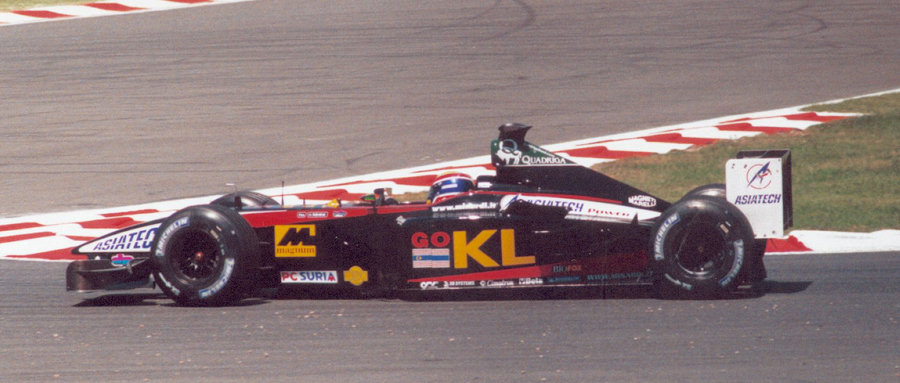
Webber officially became an F1 driver and joined the Minardi team just weeks before the 2002 Australian Grand Prix. Ron Walker and telecommunications company Telstra successfully lobbied for Webber to replace Fernando Alonso at Minardi for the first three races of the 2002 season. Webber's Minardi PS02-Asiatech car was underdeveloped, and he barely fit inside it due to his height. He hoped to gain enough experience to progress in F1. In his debut race, he qualified 18th but finished fifth after numerous first-lap retirements, securing two points. This made him the first Minardi driver to score points since Marc Gene in 1999 and the first Australian to score points in F1 since David Brabham in 1994. Consequently, Stoddart retained Webber for the remainder of the season.
At the 2002 Spanish Grand Prix four races later, Webber and his teammate Alex Yoong were withdrawn due to three wing failures during practice. He consistently outperformed Yoong and Yoong's two-race replacement, Anthony Davidson, as Webber was the only Minardi driver using power steering due to budgetary constraints. He frequently outperformed the Arrows and Toyota teams. His best result for the rest of the season was eighth at the 2002 French Grand Prix. Webber finished 16th overall with two points. During the season, he lost 4.4 lb (2 kg) of weight in the 2002 Hungarian Grand Prix due to driving without a drink bottle after it broke. In 2002, Webber's management expressed concern about Minardi's financial situation, leading them to arrange a test and evaluation in the more powerful Jaguar R3 mid-year.
3.2. Jaguar (2003-2004)
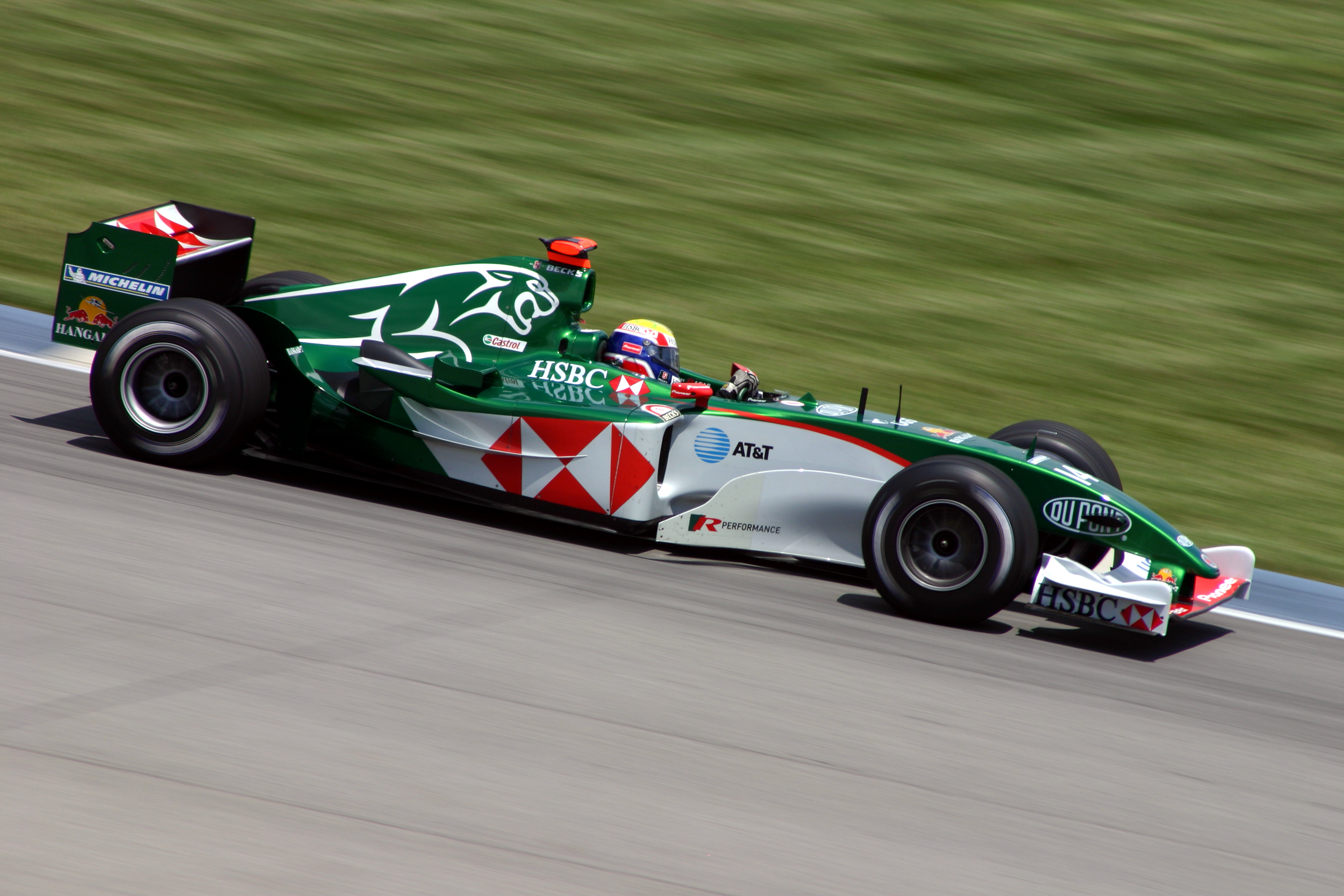
Toyota and Jaguar both showed interest in Webber, but he ultimately joined Jaguar in November 2002, replacing the veteran Eddie Irvine. Webber found himself underprepared as his Jaguar R4 car was unreliable due to a Cosworth V10 engine prone to failure and rapidly wearing rear tyres. At the third round of the 2003 season, the 2003 Brazilian Grand Prix, he qualified a season-high third but crashed after losing grip while driving through water to cool his tyres late in the rain-affected race. This incident, involving Fernando Alonso, led to debates about the race winner, with FIA ultimately awarding the victory to Jordan GP at the 2003 San Marino Grand Prix.
Webber scored points seven times in 2003, with his best results being three sixth-place finishes, placing him 10th in the Drivers' Championship with 17 points. He crashed less frequently than he had in F3000, and his qualifying and race pace saw him outperform both Antônio Pizzonia and Wilson. He was touted as a future star despite the car's poor reliability and weak package.
Webber was offered a five-year contract extension but opted for a two-year extension instead. Enquiries from Ferrari and McLaren ceased after he signed the extension. During the 2004 season, Webber significantly contributed to the Jaguar R5's technical development and consistently extracted extra performance from the car, regularly outperforming his Red Bull-backed teammate Christian Klien. Despite this, the underperforming and unreliable R5 caused him to retire from 8 out of 18 races. He scored points four times, with a season-high start of second at the 2004 Malaysian Grand Prix (though he stalled at the start of the race) and a best finish of sixth at the 2004 European Grand Prix. He finished 13th overall with 7 points.
A heated incident occurred at the 2004 Canadian Grand Prix when Webber was hit by his teammate shortly after the start, subsequently involving David Coulthard. At the 2004 United States Grand Prix, he retired due to an oil leak. Ahead of the season's end, with Jaguar announcing its withdrawal from F1, Webber's official move to Williams led to Antonio Pizzonia commenting that he would not want to be paired with Webber again, rekindling their past animosity.
3.3. Williams (2005-2006)

Frank Williams, the Williams team owner, was interested in Webber, believing that driving for the team would advance his career. In mid-2004, McLaren team principal Ron Dennis approached Webber, but negotiations were barred due to his manager Flavio Briatore. Webber activated a performance clause allowing him to leave Jaguar if a better offer arose. Williams released Sauber driver Fisichella from his contract, and Webber was signed to replace him for 2005. Williams chose Webber for his driving approach and his frequent visits to the Williams factory in Grove, Oxfordshire to help resolve issues and improve car speed and reliability. He was granted an early release from Jaguar after the 2004 Brazilian Grand Prix to test for Williams and prepared for the season by training with cyclist Lance Armstrong in Texas.
Webber replaced the Toyota-bound Ralf Schumacher at Williams, partnering Nick Heidfeld for most of the season and Pizzonia for the final five races after Heidfeld's injury. The Williams FW27 car suffered from poor aerodynamics due to incorrectly calibrated wind tunnels and lacked race speed and good starts, causing him to lose positions despite strong qualifying performances. In a mid-February pre-season test, he sustained a broken left-side rib and damaged cartilage due to incorrect exercise. He competed in the first two races on painkillers prescribed by FIA medical director Gary Hartstein.
Webber achieved his first F1 podium finish by placing third at the 2005 Monaco Grand Prix and scored points in ten races in 2005. His best start was second in Spain, and he qualified within the top five in the first seven rounds. He was involved in five race collisions and suffered a burn to his right hip at the 2005 French Grand Prix due to heat from a failed external electronics box entering the cockpit. He finished 10th overall with 36 points, acknowledging that his reputation had faltered. He out-qualified Heidfeld nine times and beat him six times, also out-qualifying Pizzonia five times that season.
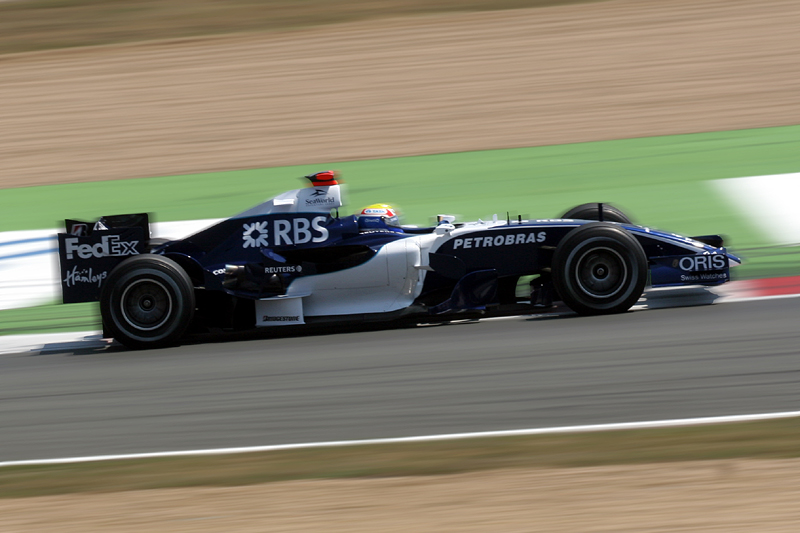
Despite Frank Williams and technical director Patrick Head making him aware of his poor performance, Webber remained at Williams for 2006, as no other driver wanted to join the team. He became distant from Williams and disliked its management, feeling he should have been more comfortable there. He stayed out of loyalty to Williams and a belief that "there was something left," rejecting an offer from BMW Sauber. His teammate that year was GP2 Series champion Nico Rosberg. His FW28 car used Bridgestone tyres and a Cosworth V8 engine after BMW ended its partnership with Williams and acquired the Sauber team. His unreliable, under-powered car retired from within the top three positions in both Australia and Monaco early in 2006. Webber finished 14th overall with 7 points; his best results were two sixth places in Bahrain and San Marino. Williams wanted to retain Webber for 2007, but he decided to leave.
3.4. Red Bull Racing (2007-2013)
3.4.1. 2007-2009
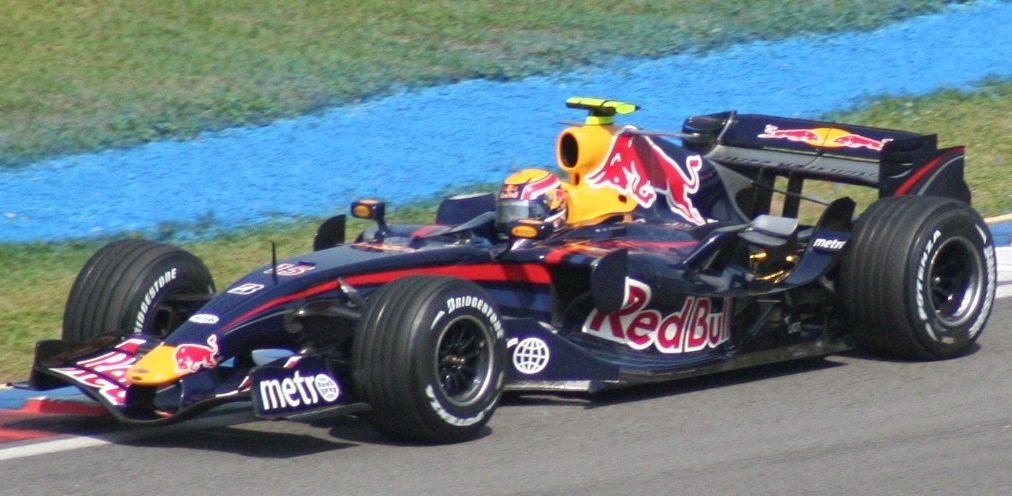
Webber did not re-sign with Williams after being offered less money for a two-year contract. He became disillusioned with F1 due to restrictions on drivers speaking freely to the press. Briatore directed Webber to the Red Bull Racing team. Red Bull had purchased Jaguar in late 2004 and signed world championship-winning technical director Adrian Newey to design the RB3-Renault car. Webber's switch from Williams to Red Bull was confirmed in August 2006, replacing Christian Klien and partnering the experienced David Coulthard. His move was surprising given Red Bull's focus on promoting young drivers.
Before the season, Webber inquired about Red Bull adviser and junior formula team owner Helmut Marko's treatment of young drivers. Team principal Christian Horner advised him to obey Marko to avoid conflict. The RB3 was a quick but unreliable car, causing Webber to retire seven times in 2007. He scored his first points of 2007 with a seventh-place finish in the 2007 United States Grand Prix and took his second career podium with a third-place finish at the 2007 European Grand Prix three races later. He scored points again at the 2007 Belgian Grand Prix, finishing seventh. He was on course for a good finish at the rain-affected 2007 Japanese Grand Prix until Toro Rosso's Sebastian Vettel crashed into the rear of his car behind the safety car, eliminating both drivers. Webber initially strongly criticized Vettel but later shifted his criticism towards Lewis Hamilton after suspicions arose that Hamilton had deliberately braked under the safety car, causing the incident. Webber tallied 10 points for 12th overall and out-qualified Coulthard 15 times.
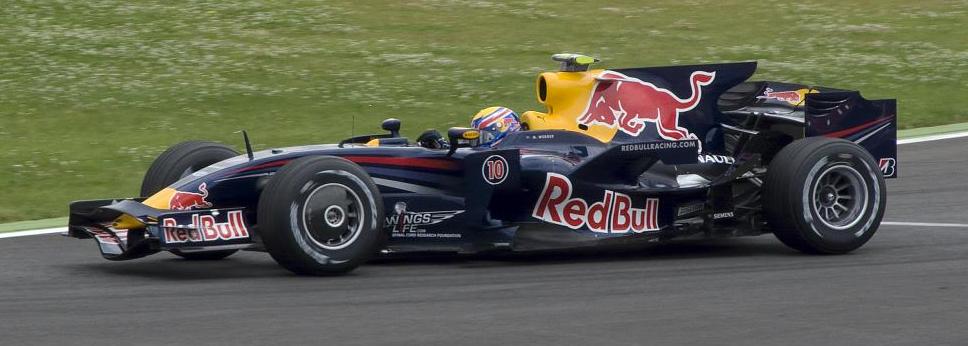
Webber remained at Red Bull for the 2008 season, again partnered by Coulthard, driving a more reliable RB4 car with a new gearbox and a heavier front. Webber frequently qualified well, scoring points in nine of the season's 18 rounds. He occasionally outperformed drivers with superior machinery, scoring points in six of the first eight races, including a season-high fourth at the 2008 Monaco Grand Prix. He qualified a season-high second for the 2008 British Grand Prix but finished tenth in the wet race after spinning on the first lap. Thereafter, Webber's performance declined because Red Bull sacrificed speed to focus on building a new car for the 2009 championship regulation changes. He scored points three more times in the final nine races, finishing 11th overall with 21 points.
Webber remained at Red Bull for 2009 due to the team's promising performance. However, he sustained multiple injuries-including a fractured right leg, broken shoulder, and open compound fractures to both the fibula and tibia-in a head-on collision with a car at a charity endurance cycling event in Port Arthur, Tasmania in November 2008. He underwent surgery between events to avoid infections. He skipped a three-day pre-season test session at the Jerez circuit but regained enough fitness to drive an F1 car in later 2009 pre-season tests at Jerez and Barcelona, thanks to the late launch of the RB5 car.
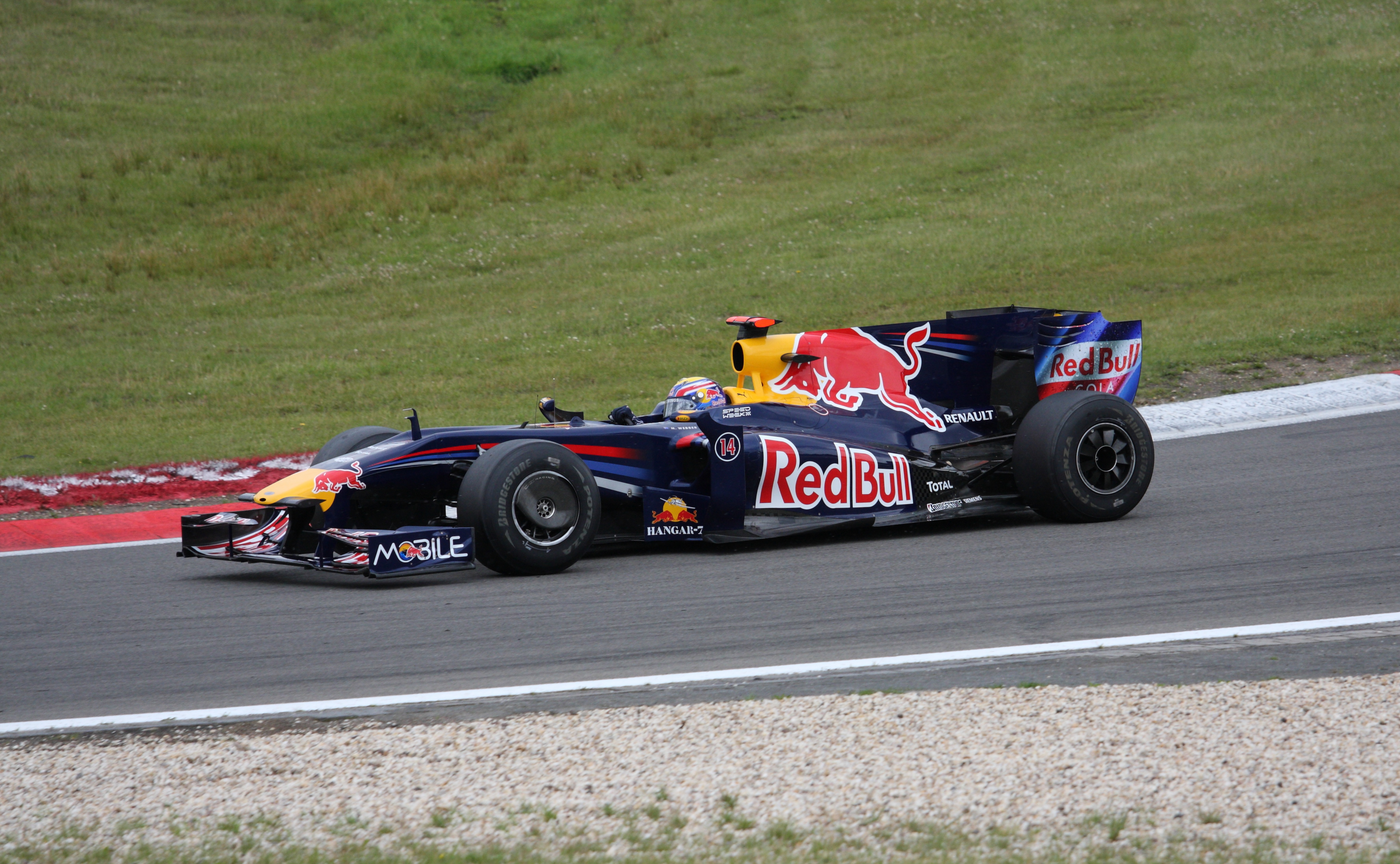
Vettel, promoted from Toro Rosso, became Webber's teammate. Webber consistently scored points in seven of the first eight races, including three podium finishes, briefly becoming a championship contender. His performances improved with the introduction of the new RB5 car's double diffuser. At the 2009 German Grand Prix, Webber overcame a drive-through penalty for a first-lap collision with Rubens Barrichello's Brawn GP car to achieve his first career F1 victory from his maiden pole position. By winning on his 130th Grand Prix start, he set the record for the highest number of career race starts before his first win, a record later surpassed by Sergio Pérez. Webber was informed by Red Bull that he and Vettel could race each other "for the foreseeable future" even while trying to reduce Button's points lead. He moved to second overall after finishing third in Hungary but fell to fourth due to driver, team, and reliability errors in the next four races. At the season's penultimate round, the 2009 Brazilian Grand Prix, Webber took his second career victory and held off Button to finish second at the season's final race in Abu Dhabi, placing fourth overall with 69.5 points.
3.4.2. 2010-2013
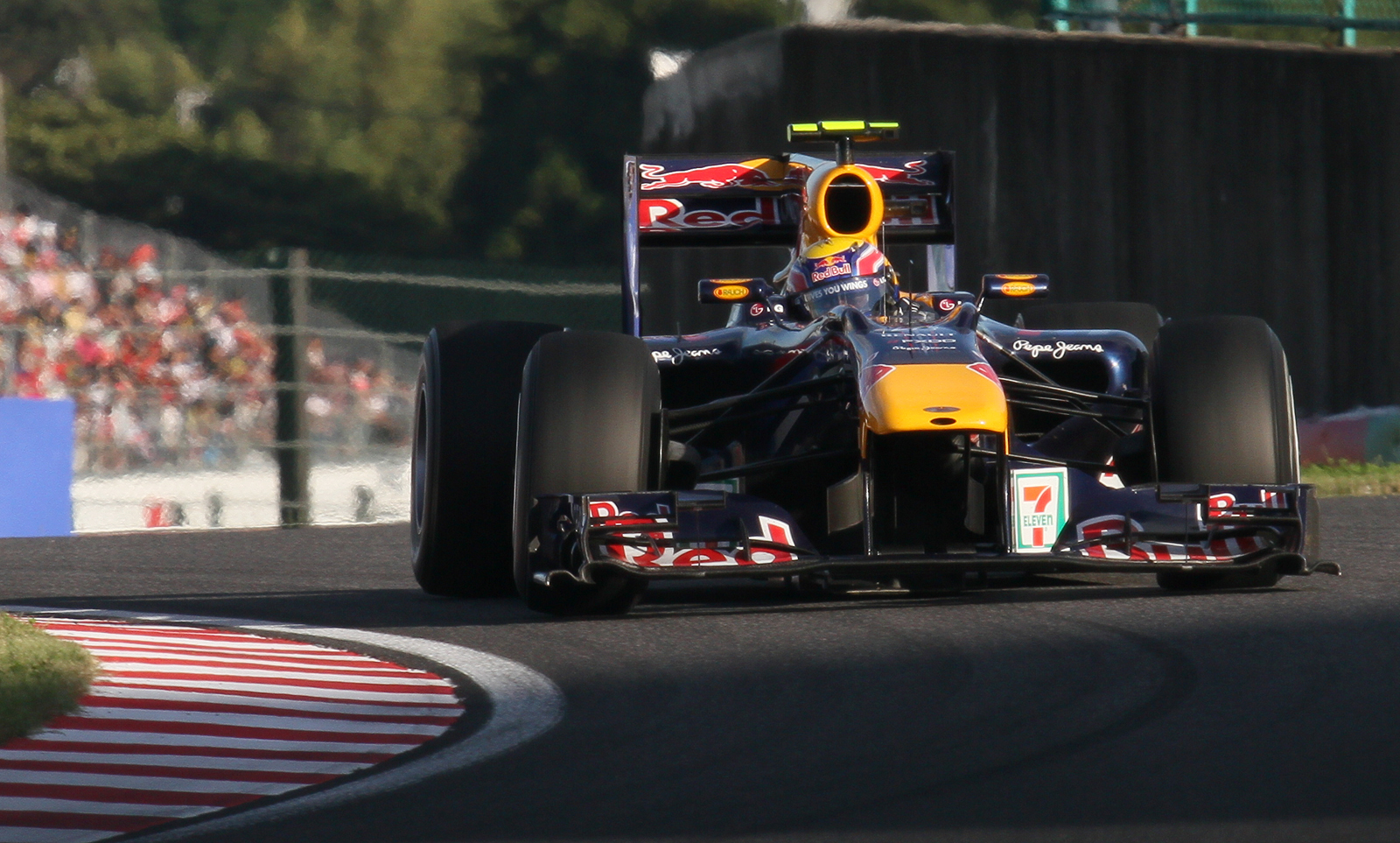
Webber and Red Bull negotiated a contract extension for the 2010 championship to reward his 2009 performance. His RB6 car was designed to channel engine exhaust gases through a bodywork slot to the diffuser's central area for increased downforce and cornering speed. A knee injury from a biking accident forced Webber to delay his preparation because a surgeon performed a full knee incision. Inactivity during surgery increased Webber's weight to 176 lb (80 kg); a strict diet kept his weight at 165 lb (75 kg). Upon his return, he led the Drivers' Championship at various points, securing four Grand Prix victories and five pole positions. He used painkillers to finish the season after sustaining a minor right shoulder injury in a mountain bike accident before the 2010 Japanese Grand Prix. This injury was concealed from Horner, known only to Webber's physiotherapist and Hartstein.
An accident with Rosberg at the 2010 Korean Grand Prix and a second-place finish at the subsequent 2010 Brazilian Grand Prix placed Webber eight points behind Alonso and seven ahead of Vettel entering the season-ending 2010 Abu Dhabi Grand Prix. Webber needed to win and for Alonso to finish third or lower to secure the championship. He finished eighth in the race, which Vettel won, while Alonso came seventh. Webber was third overall with 242 points. After the season, Webber was angry with Red Bull's management, feeling they devalued his achievements. His relationship with Marko cooled after their collision in a duel for the lead at the 2010 Turkish Grand Prix, which Marko blamed on Webber and used to favor Vettel. Webber felt this bias again when Vettel received a new front wing intended for Webber at the 2010 British Grand Prix. At the 2010 European Grand Prix, Webber notably collided with the rear of Heikki Kovalainen's car on lap 9, causing his car to become airborne and land upside down before hitting a tire barrier. Fortunately, he escaped serious injury.
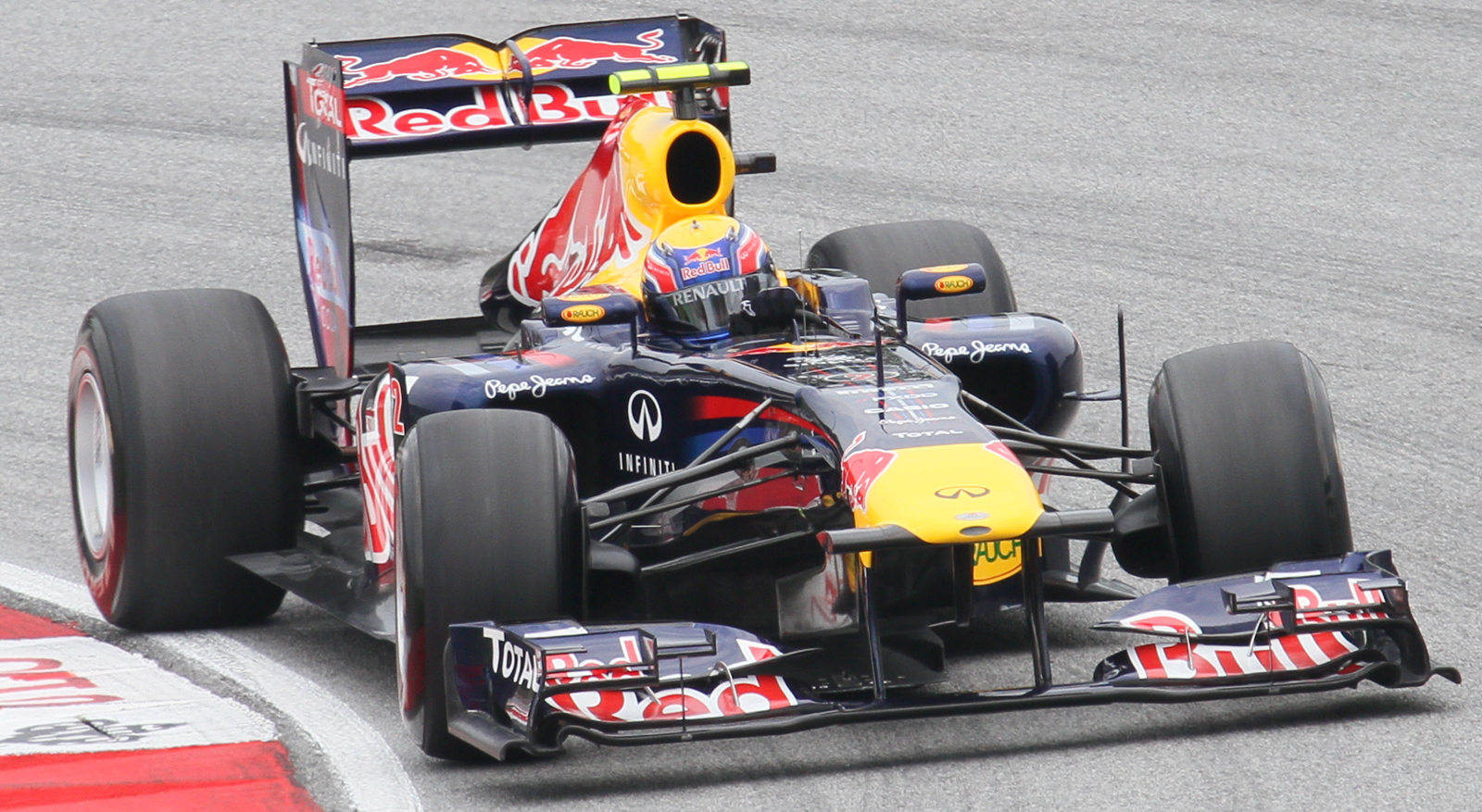
He signed a Red Bull contract extension for the 2011 season before the 2010 Canadian Grand Prix, having agreed to sign one-year contracts later in his career for ability and quality assessment. His mental state worsened as he was ready to retire after a title win to escape negativity surrounding his racing career. His RB7 car, equipped with the kinetic energy recovery system (KERS) and drag reduction system devices and an exhaust-blown diffuser, produced significant rear grip. Webber was hindered by intermittent KERS failures (which Red Bull rectified) and was frustrated by the quickly degrading Pirelli tyres, which lost performance in the aerodynamic turbulence of another car. He made slower starts due to the car's ballast distribution, compromised by KERS' additional weight, exacerbated by him weighing 24 lb (11 kg) more than Vettel. Other factors included the transfer of Red Bull's engineer leading their starts performance group, a change in car clutch, and a modified starting procedure, all of which were corrected in the season's second half.
Dietrich Mateschitz, Red Bull's owner, directed the team to allow both Webber and Vettel to race each other. Webber finished no lower than fifth in the first four races, taking third in China and second in Turkey. He finished the 2011 Spanish Grand Prix fourth from pole position. Webber secured consecutive pole positions at the 2011 British Grand Prix and 2011 German Grand Prix and achieved seven podiums from eleven top-ten finishes in the next 13 events. He won the season-ending 2011 Brazilian Grand Prix to take third overall from Alonso with a career-high 258 points. Webber initially struggled with the new Pirelli tyres, which produced a greater amount of lateral load than Vettel's and required a more aggressive acceleration style. His qualifying and race performances improved once he became more familiar with the tyres. He made fewer pit stops by adapting strategies from other drivers, having previously stopped more often due to competitive racing.
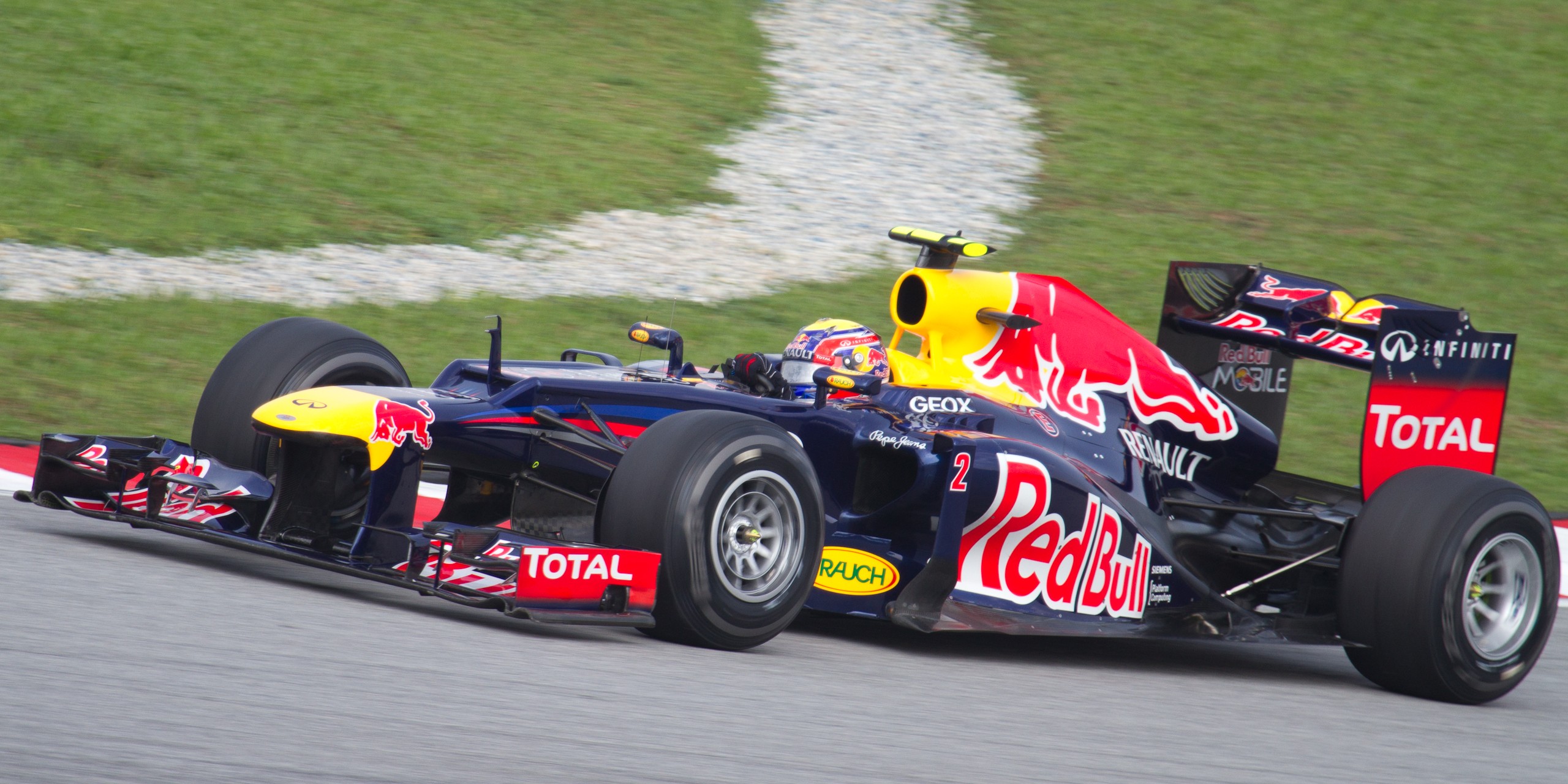
Webber signed to remain at Red Bull for the 2012 season on the day of the 2011 Hungarian Grand Prix. His decision to re-sign was made more difficult in mid-2011 due to his poor qualifying performance on Pirelli tyres, but he recognized the potential of Newey's car designs. The RB8 car was not as dominant as its two predecessors. Webber finished fourth in the first four races, hampered by minor mechanical problems and faulty KERS. He grew frustrated with F1 after a poor performance at the 2012 Spanish Grand Prix. However, he won the 2012 Monaco Grand Prix from pole position and the 2012 British Grand Prix three races later after passing Alonso with eight laps remaining, moving to second overall behind Alonso. This made him the first Australian driver to win the Monaco Grand Prix twice. Webber secured two more podium finishes in Korea and India during the season's final 11 races, finishing 2012 sixth overall with 179 points.
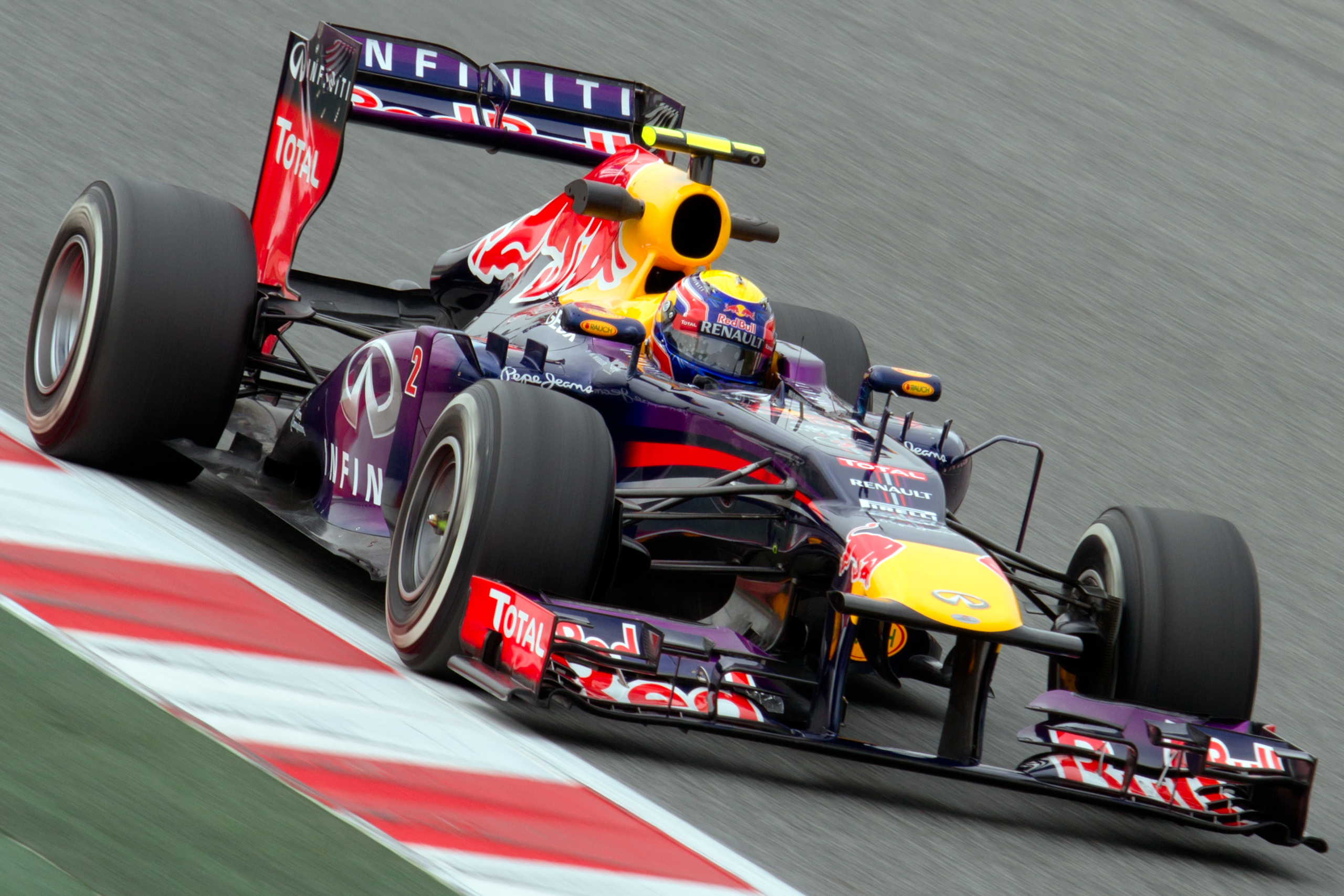
Webber remained at Red Bull for the 2013 championship, honoring a promise he had made to Horner and Mateschitz to stay until his F1 career ended. He rejected an offer from Ferrari team principal Stefano Domenicali to partner Alonso and replace Felipe Massa for a year with a second optional year, feeling a team switch would be inappropriate. He briefly lightened his training during the pre-season after a titanium rod was removed from his right leg in December 2012. After resuming training that month, Webber decided to retire from F1 after 2013, citing a desire for more family time, demotivation with F1 (as drivers couldn't criticize Pirelli's tyres for fear of repercussions), and the politics involved with large sums of money. Simon Rennie was assigned as his race engineer after his previous engineer, Ciaron Pilbeam, became the Lotus team's chief race engineer. Before the 2013 season, Red Bull advisor Helmut Marko controversially suggested in The Red Bulletin that Webber could win two Grands Prix per season but would be inconsistent and unable to recover from sub-par performance. These comments led Webber to inform Horner that Marko was persona non grata.
His RB9 car initially struggled, possibly due to its aerodynamic profile on the new softer Pirelli compounds, but performed better when the 2012 compounds were reintroduced mid-season. Reports circulated in the paddock that Webber was denied access to rumored legal traction control technology on his car for cost reasons. At the 2013 Malaysian Grand Prix, the season's second round, Webber was overtaken by Vettel in the closing laps after Vettel ignored the team order "Multi-Map 21," which instructed him to finish behind Webber. This incident significantly heightened tension between the two drivers, and Webber's remark about Vettel's independent decision led to Vettel losing respect for Webber as a person. Afterwards, Webber understood the rest of the season would be difficult and that the tension would stress Red Bull. He achieved eight podium finishes, including four more second-place finishes at the 2013 British Grand Prix, 2013 Japanese Grand Prix, 2013 Abu Dhabi Grand Prix (from pole position), and the season-ending 2013 Brazilian Grand Prix. Webber did not win any races in 2013 and concluded his final F1 season in third overall with 199 points. In his last race at the Brazilian Grand Prix, he notably removed his helmet during the in-lap to acknowledge the cheering crowd.
4. Post-Formula One Racing Career
After his Formula One departure, Mark Webber continued his racing career in endurance events, notably achieving a world championship before fully retiring.
4.1. FIA World Endurance Championship (2014-2016)
Webber joined Porsche's sports car team upon its return to motor racing in mid-2013. He informed Horner and Mateschitz of his decision to join Porsche and publicly announced the news at the 2013 British Grand Prix. Ann Neal and his lawyer reviewed Webber's Red Bull contract, which stated he had to inform Red Bull if he was joining another F1 team but not if he wanted to leave the sport. He transitioned to sports car racing to escape the intense attention associated with F1 and to enjoy the longer intervals between races. Webber shared the No. 20 closed-cockpit Porsche 919 Hybrid sports prototype car with German Timo Bernhard and New Zealander Brendon Hartley in the FIA World Endurance Championship (WEC)'s fully-professional Le Mans Prototype 1-Hybrid (LMP1-H) category.
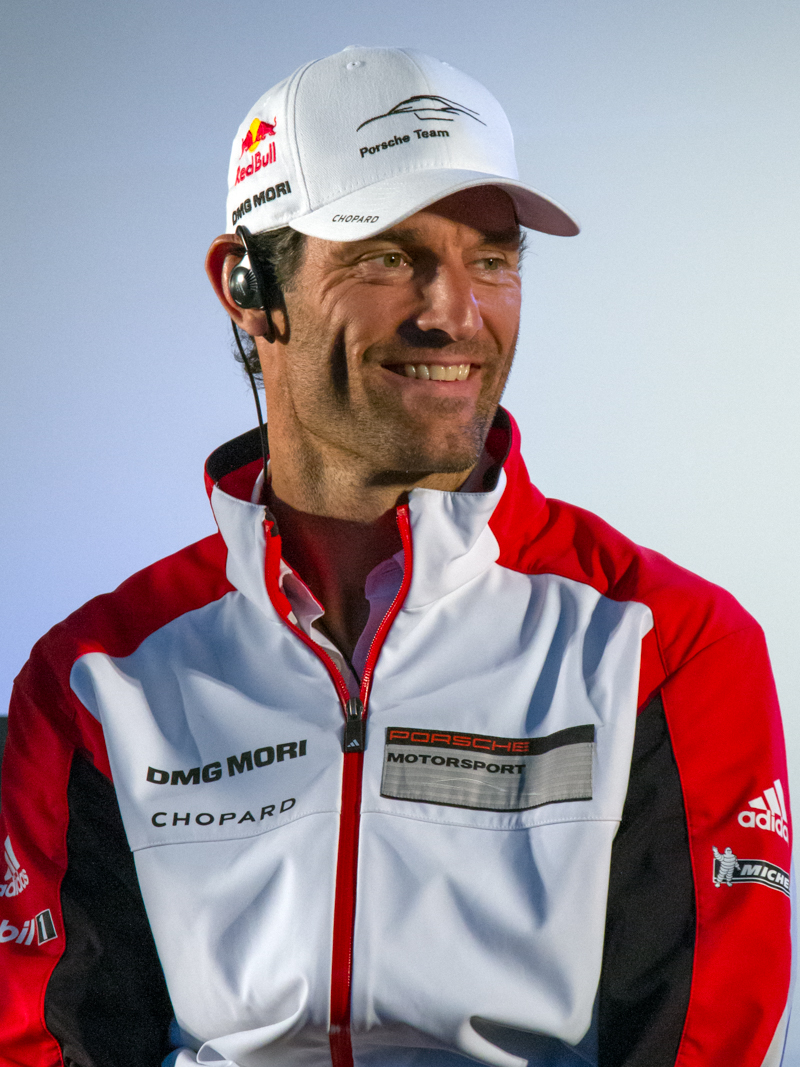
Although sports car racing was less physically demanding, Webber needed consistently high concentration to cope with the speed differences between the WEC's four classes, driving at night, re-adjusting to lapping slower vehicles while losing minimal time, and handling changeable conditions during long races. He was advised on modern sports car racing by Bernhard and, in turn, familiarized Bernhard and Hartley with the circuits he had driven in F1. He focused on developing the car for his co-drivers rather than solely for himself, directing Porsche to prioritize research and development projects that optimized performance quickly. Webber also helped the team reduce pit stop times.
The 2014 season began with Webber qualifying sixth and finishing third at the season-opening 2014 6 Hours of Silverstone. Hybrid technical issues at the following 2014 6 Hours of Spa-Francorchamps left Webber and his co-drivers 23rd overall. At the 2014 24 Hours of Le Mans, Webber's team qualified the No. 20 car second but retired after 22 hours due to a broken anti-roll bar. The next four races saw him finish no lower than sixth, including third at both the 2014 6 Hours of Fuji and the 2014 6 Hours of Bahrain. At the season-ending 2014 6 Hours of São Paulo, his team qualified on pole position. Late in the race, Matteo Cressoni's No. 90 AF Corse-run 8 Star Motorsports Ferrari 458 Italia hit the right-rear of his car, sending Webber into a concrete barrier. Webber sustained a left lung contusion and severe concussion, recovering from the crash weeks later. He finished ninth in the World Endurance Drivers' Championship (WEDC) with 64.5 points.
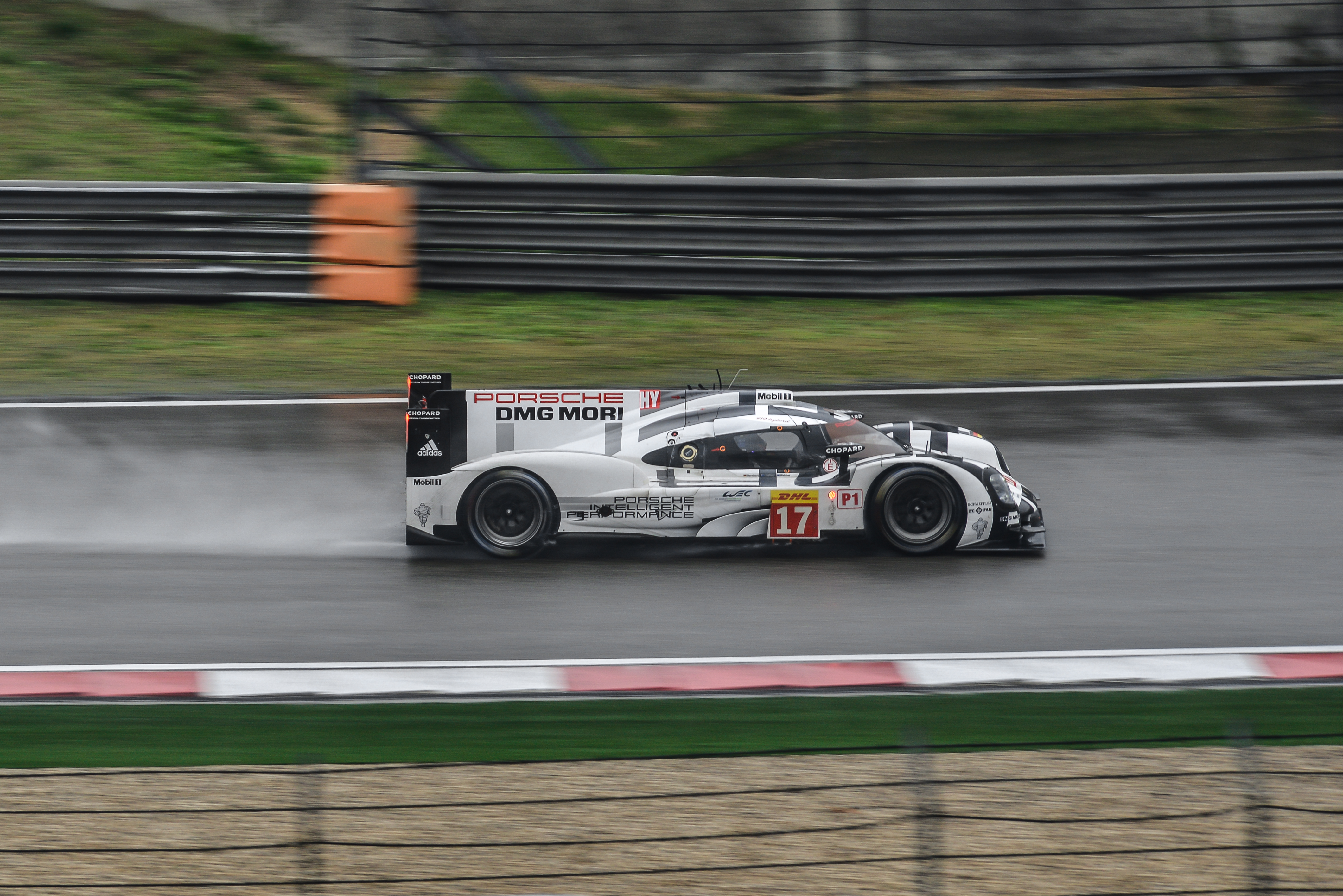
Porsche retained Webber for the 2015 season alongside Bernhard and Hartley in the renumbered No. 17 car. Webber and Hartley qualified the car on pole position for the season-opening 2015 6 Hours of Silverstone, but Webber had to retire it with drivetrain failure. He was on pole at the following 2015 6 Hours of Spa-Francorchamps and finished third after Hartley incurred a stop-and-go penalty. He qualified and finished second at the 2015 24 Hours of Le Mans, notably finishing ahead of the Nissan GT-R LM Nismo driven by Max Chilton, Jann Mardenborough, Alex Buncombe, Harry Tincknell, Olivier Pla, Michael Krumm, Tsugio Matsuda, Lucas Ordóñez, and Mark Shulzhitskiy. The Porsche crew then claimed four consecutive victories, entering the season-ending 2015 6 Hours of Bahrain leading Audi's Marcel Fässler, André Lotterer, and Benoît Tréluyer by 12 points. Webber and his teammates needed to finish third to win the WEDC. They qualified on pole position and overcame mechanical problems to finish fifth, securing the title with 166 points, five ahead of their Audi rivals.
Webber again remained at Porsche alongside Bernhard and Hartley in the renumbered No. 1 entry for the 2016 championship. The crew retired from the season-opening 2016 6 Hours of Silverstone following a collision between Hartley and a slower Porsche GT car. At the following 2016 6 Hours of Spa-Francorchamps, two tyre punctures and a front axle gearbox problem left him 27th overall. Webber started from second at the 2016 24 Hours of Le Mans and finished 13th overall due to a water pump failure that required fixing during his stint. The rest of the season saw the crew win four of the next six races and qualify on pole position once, finishing fourth in the WEDC with 134.5 points.
4.2. Retirement from Professional Racing
Webber decided to retire from motor racing after the 2016 season. He kept the news secret until traveling to Japan, citing Porsche's dwindling commitment to its LMP1 program and the difficulty of doing "this job half-hearted" with regards to motivating himself for test sessions and races.
Webber was scheduled to compete in the American-based short track oval racing series Superstar Racing Experience in 2021. However, travel restrictions caused by the COVID-19 pandemic ultimately prevented him from participating.
5. Driving Style
Mark Hughes, a motorsport journalist, described Webber's driving style as exceptionally adept at extracting every ounce of potential from the car through fast, aerodynamically-loaded corners. He noted that extra lap time could be found in slower turns because the car remains in them for longer. Webber was skilled at feeling the braking grip of his tyres and could correctly modulate throttle power as grip levels reduced under braking to slow the vehicle down. When entering a braking zone, he achieved a higher retardation rate in a downforce-reliant car compared to other drivers, and as the downforce decreased, he maintained excellent pressure and sensitivity to stay within the tyre's grip limit. This braking force allowed him to gain lap time where the entry speed was high enough to make this possible without brake locking.
However, his driving style, refined in downforce-heavy sports cars in the late 1990s, was not well-suited to the more gentle approach required for driving V8 F1 Pirelli-shod cars. This was particularly evident in how he managed Pirelli tyres, which degraded faster than the Bridgestone compounds he was accustomed to.
6. Other Activities and Ventures
Beyond his distinguished racing career, Mark Webber has diversified into various media, management, and charitable endeavors.
6.1. Media and Management
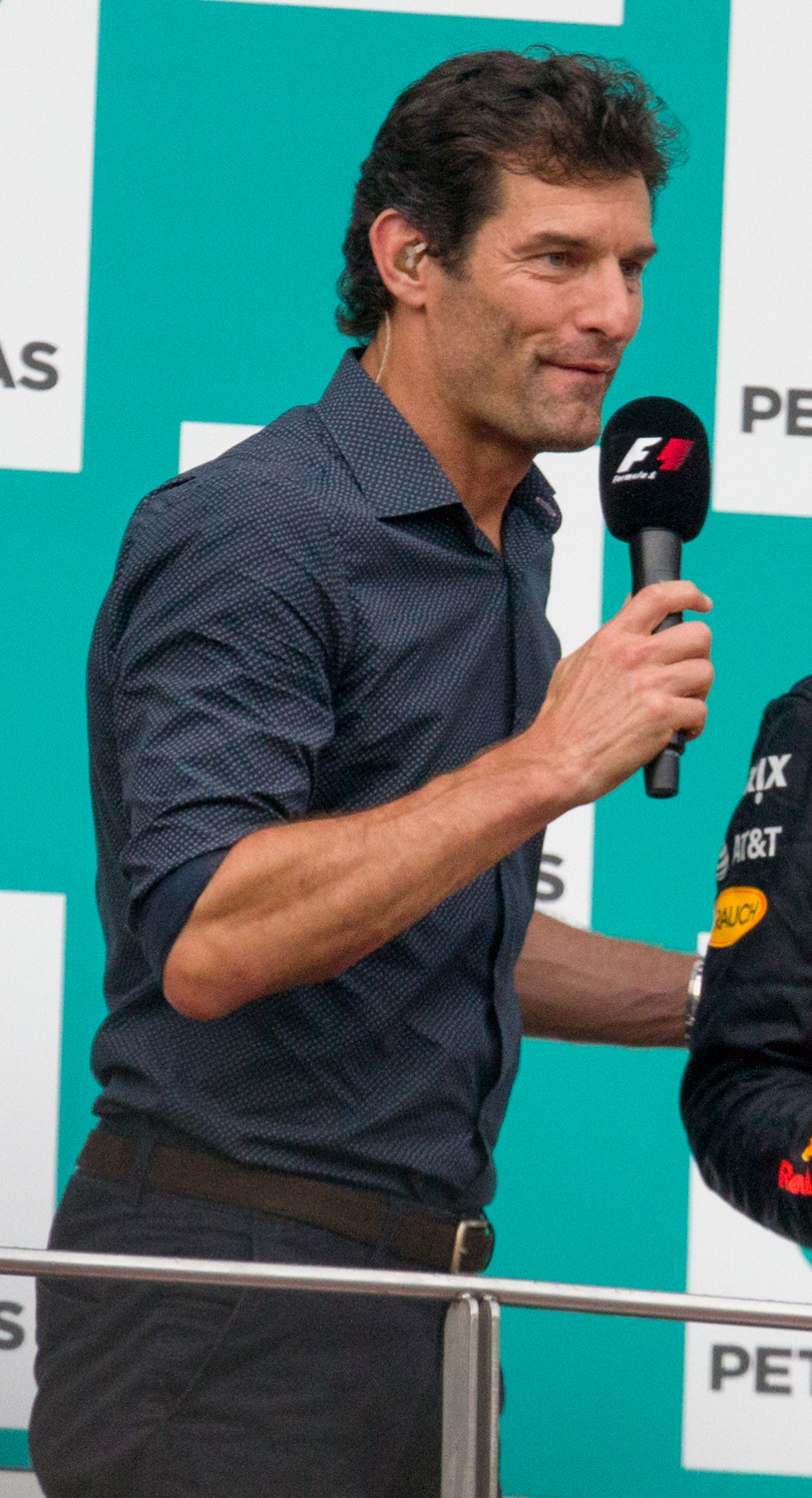
Webber has cultivated a significant presence in media and sports management post-retirement. He has provided expert analysis on F1 for the British television broadcaster Channel 4 since the 2016 season and has held a similar role for Australia's Channel 10, covering the Australian Grand Prix and co-hosting the 2015 Clipsal 500 of the V8 Supercars Championship. He also served as a guest reporter for two rounds of the 2017 World Rally Championship on Red Bull TV.
Webber has written columns for Autosport, the BBC, and The Sydney Daily Telegraph. Since early 2020, he has mentored racing driver Oscar Piastri and represents his commercial interests through JAM Sports Management, a management arm he co-founded with his wife and corporate and sports CEO Jason Allen. He also joined documentary makers Noah Media Group as a producer and an investor in November 2021.
6.2. Charity and Community Involvement
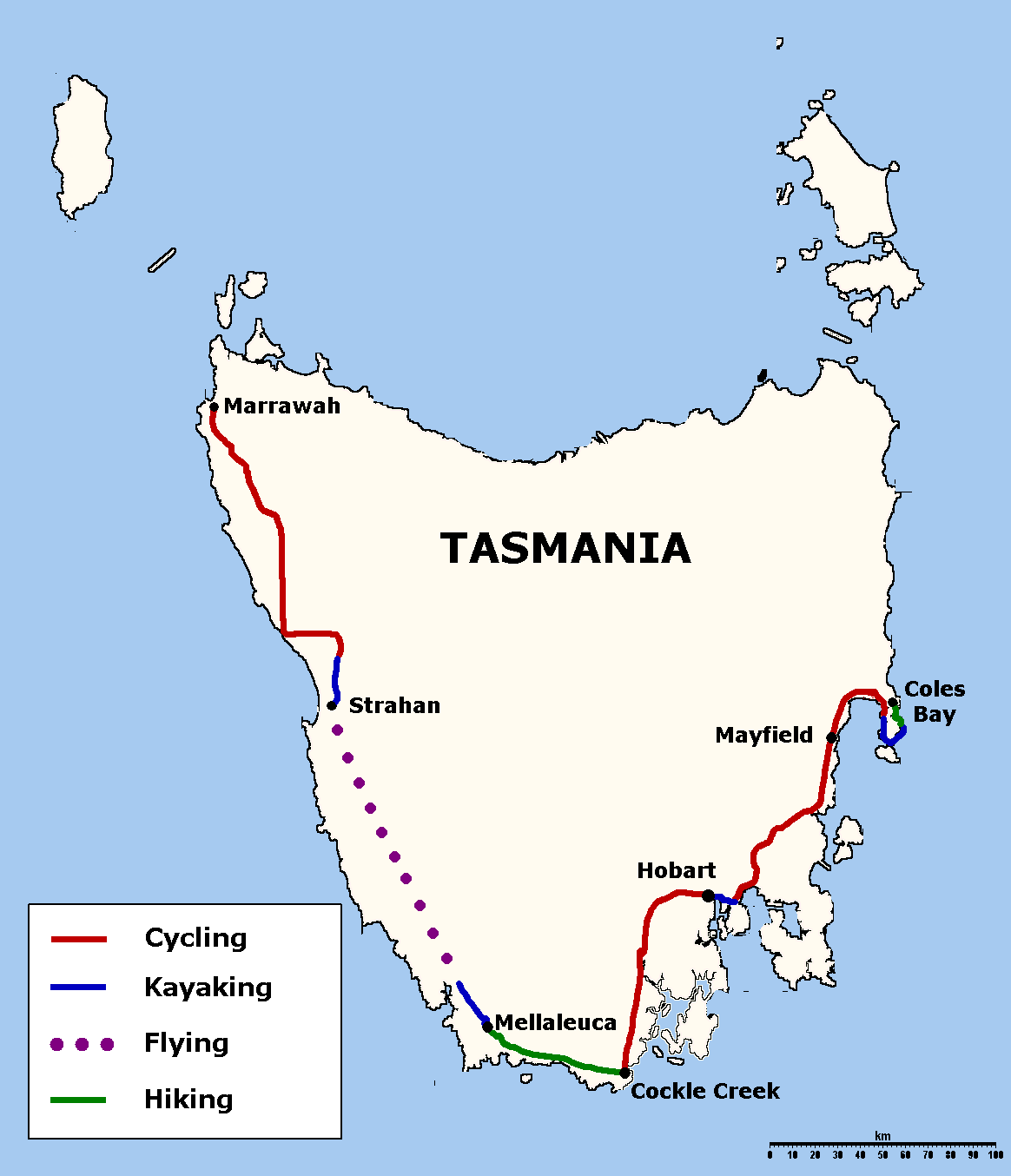
In 2003, Webber initiated the Mark Webber Challenge, a ten-day, 0.6 K mile (1.00 K km) adventure trek in Tasmania featuring cross-country running, cycling, and kayaking. The event aimed to raise money for children's cancer charities. He organized it following his grandfather's death from cancer and his experiences with friends whose children battled the disease. The inaugural challenge, starting in Marrawah and concluding in Coles Bay after passing through Tasmania's desert and Freycinet National Park, saw four teams compete, with only two (including Webber's team) completing the full distance. Notable Australian athletes such as Pat Rafter, Steve Waugh, Cathy Freeman, James Tomkins, Guy Andrews, and actor Joel Edgerton participated in sections of the event. The challenge concluded with a gala dinner and auction to raise funds.
Webber held the challenge again from 2006 to 2008, but paused it in 2009 and 2010 due to economic problems. He resumed the event with corporate and local government sponsorship from 2011 to 2013. In 2014, Inspire Young People and Webber created the Mark Webber Youth Challenge, involving college student teams in physical activities to raise money for charity.
Webber also serves as a patron for various organizations. He was a patron of the Amy Gillett Foundation, promoting safer on-road relationships between cyclists and motorists. He is also a patron of the Aylesbury College Trust. In November 2021, he supported the use of the AI-operated prostate cancer diagnosis device Maxwell Plus in Queanbeyan, following a reduction in testing during the COVID-19 pandemic. In March 2023, Webber became an ambassador for the Amber Foundation, a youth homeless charity.
6.3. Publications and Business Ventures
Webber is a brand ambassador for several prominent companies, including luxury fashion house Hugo Boss, car brand Porsche, watch manufacturer Rolex, synthetic engine oil brand Mobil 1, and airline carrier Qantas. He also supports the spinal cord injury research charity Wings for Life. His endorsement money and salary have consistently placed him on Australia's Top 50 Sports Earners and the BRW Young Rich lists by BRW magazine.
From 2009 to 2013, Webber and Horner co-owned the MW Arden junior team, which competed in the European-based GP3 Series. In 2018, he launched his own off-road sports clothing brand, Aussie Grit, focusing on mountain riding and running. He also fronted Porsche and Boss' clothing collections for 2019 and 2020. Webber authored the book, Up Front - 2010, A Season To Remember, in 2010. His autobiography, Aussie Grit: My Formula One Journey, ghostwritten by Stuart Sykes, was published in 2015. He also owned a public house, The Stag, in Mentmore.
7. Legacy and Honours
Mark Webber's career is marked by a reputation for directness and integrity, alongside numerous awards and recognitions for his sporting achievements and community contributions.
7.1. General Assessment
Webber is affectionately known as "Aussie Grit," a nickname reflecting "his determination in the face of adversity and his patriotism." Bruce Jones, in The Story of Formula One: 65 Years of Life in the Fast Lane, described Webber as having earned "considerable admiration for his straight-talking, honest approach that was devoid of pretence or hyperbole. He is an out-and-out racer cast from something of an old-fashioned mould and as such often seemed an adult in an increasingly infantile world." BBC Sport's Andrew Benson noted that Webber's "combination of race-winning pace and forthright manner has made him a central figure in F1 over the last decade" and that he "remained true to himself. He is unimpressed with the trappings of F1 and its supposed glamour. And his willingness to follow his own mind is intact." In Japan, he was sometimes nicknamed "South Hemisphere's James Bond" by Fuji TV F1 broadcasts due to his tall stature.
In October 2003, Webber was unanimously voted as the fourth director of the trade union Grand Prix Drivers' Association (GPDA). He was voted out in September 2005 due to concerns about having too many directors but was reinstated as a director in September 2006, resigning in March 2010.
7.2. Awards and Recognition
Webber has received numerous accolades throughout his career:
- He won the BRDC Bruce McLaren Award in 1998, 2000, 2001, 2009, and 2010 as "the Commonwealth driver who has established the most meritorious performances in international motor racing."
- In October 2000, he received the Australian Sports Medal for placing second in the 1998 FIA GT Championship and participating in the IF3000 Championship.
- He was voted "Rookie of the Year" by both F1 Racing and Autosport magazines and named "F1 Newcomer of the Year" at the annual Grand Prix Party Awards in 2002.
- He was named Autocars 2003 F1 Driver of the Year.
- He won the Lorenzo Bandini Trophy in 2006.
- He received the 2009 Innes Ireland Trophy for displaying "courage and sportsmanship."
- He received the Hawthorn Memorial Trophy in 2010 and 2013 as the most successful British or Commonwealth driver during a season.
- He was named the 2010 GQ Australia Sportsman of the Year.
- He won the 2011 DHL Fastest Lap Award for setting more fastest laps than any other driver that year (seven).
- He received the 2013 Johnny Wakefield Trophy for recording the year's best lap on the Silverstone GP Circuit.
- He was appointed Officer of the Order of Australia (AO) in the 2017 Australia Day Honours for "distinguished service to motor sport as a competitor and ambassador, and to the community through fundraising and patronage of a range of medical and youth support organisations."
- Webber was inducted into the Australian Motor Sport Hall of Fame in 2018 and the FIA Hall of Fame in 2019.
- In 2022, he was inducted into the Sport Australia Hall of Fame.
7.3. Criticism and Controversies
Webber's career included several notable incidents and moments of tension, particularly during his time at Red Bull Racing. The most prominent was the "Multi-Map 21" incident at the 2013 Malaysian Grand Prix, where his teammate Sebastian Vettel defied team orders to overtake Webber and win the race. This led to significant public and internal tension, with Webber publicly stating that Vettel had lost his respect as a person.
Another controversial moment occurred at the 2007 Japanese Grand Prix, where Webber, despite suffering from food poisoning (reportedly from sushi), was in a strong position for a podium finish before being hit by Sebastian Vettel under a safety car. Webber initially blamed Vettel but later shifted criticism towards Lewis Hamilton, alleging that Hamilton had deliberately slowed down under the safety car to cause the collision.
The 2010 Turkish Grand Prix also saw an on-track collision between Webber and Vettel while battling for the lead, which cooled Webber's relationship with Red Bull advisor Helmut Marko, who sided with Vettel. This was compounded by an incident at the 2010 British Grand Prix where Vettel received a new front wing that was originally intended for Webber, prompting Webber's sarcastic radio message: "Not bad for a number two driver."
Webber also had a heated moment with Romain Grosjean at the 2012 Japanese Grand Prix after Grosjean collided with him on the opening lap. Webber criticized Grosjean, calling him "a first-lap nutcase." While his relationship with Grosjean later improved, Webber would occasionally express frustration when Grosjean was involved in incidents.
His straightforward and opinionated nature sometimes led to public friction. For instance, he openly criticized F1's press relations, feeling competitors couldn't speak freely. He also mentioned demotivation with F1 later in his career, partly due to perceived restrictions on criticizing Pirelli's tyres. He was also perceived by some as "anti-Japan" after stating in a 2008 interview that he wished the Japanese Grand Prix would be removed from the calendar, a comment reportedly stemming from his food poisoning incident in 2007. However, he later clarified his respect for Suzuka Circuit and showed no ill will towards Japan itself, supporting East Japan earthquake recovery efforts.
8. Racing Record
8.1. Career summary
| Season | Series | Team | Races | Wins | Poles | Fastest laps | Podiums | Points | Position |
|---|---|---|---|---|---|---|---|---|---|
| 1994 | Australian Formula Ford Championship | Mark Webber | 16 | 0 | 0 | ? | 1 | 30 | 13th |
| 1995 | Australian Formula Ford Championship | Yellow Pages Racing | 16 | 3 | 3 | ? | ? | 158 | 4th |
| Australian Drivers' Championship | Birrana Racing | 2 | 0 | 0 | 0 | 2 | 32 | 8th | |
| Formula Ford Festival | Van Diemen | 1 | 0 | 0 | 0 | 1 | N/A | 3rd | |
| 1996 | European Formula Ford Championship | Van Diemen | ? | ? | ? | ? | ? | ? | 3rd |
| British Formula Ford Championship | ? | ? | ? | ? | ? | 113 | 2nd | ||
| Formula Ford Festival | 1 | 1 | 0 | 0 | 1 | N/A | 1st | ||
| Australian Drivers' Championship | Ralt Australia | 2 | 1 | 0 | 0 | 1 | 20 | 10th | |
| 1997 | British Formula 3 Championship | Alan Docking Racing | 16 | 1 | 3 | 1 | 5 | 127 | 4th |
| Macau Grand Prix | 1 | 0 | 0 | 0 | 0 | N/A | 4th | ||
| Masters of Formula 3 | 1 | 0 | 0 | 0 | 1 | N/A | 3rd | ||
| 1998 | FIA GT Championship | AMG Mercedes | 10 | 5 | 0 | 0 | 8 | 69 | 2nd |
| 24 Hours of Le Mans | 1 | 0 | 1 | 0 | 0 | N/A | NC | ||
| 1999 | 24 Hours of Le Mans | AMG Mercedes | 1 | 0 | 0 | 0 | 0 | N/A | DNS |
| 2000 | International Formula 3000 | European Arrows | 10 | 1 | 0 | 2 | 3 | 21 | 3rd |
| Formula One | Arrows F1 Team | Test driver | |||||||
| 2001 | International Formula 3000 | Super Nova Racing | 12 | 3 | 2 | 3 | 4 | 39 | 2nd |
| Formula One | Benetton Renault | Test driver | |||||||
| 2002 | Formula One | KL Minardi Asiatech | 17 | 0 | 0 | 0 | 0 | 2 | 16th |
| 2003 | Formula One | Jaguar Racing F1 Team | 16 | 0 | 0 | 0 | 0 | 17 | 10th |
| 2004 | Formula One | Jaguar Racing F1 Team | 18 | 0 | 0 | 0 | 0 | 7 | 13th |
| 2005 | Formula One | BMW Williams F1 Team | 19 | 0 | 0 | 0 | 1 | 36 | 10th |
| 2006 | Formula One | Williams F1 Team | 18 | 0 | 0 | 0 | 0 | 7 | 14th |
| 2007 | Formula One | Red Bull Racing | 17 | 0 | 0 | 0 | 1 | 10 | 12th |
| 2008 | Formula One | Red Bull Racing | 18 | 0 | 0 | 0 | 0 | 21 | 11th |
| 2009 | Formula One | Red Bull Racing | 17 | 2 | 1 | 3 | 8 | 69.5 | 4th |
| 2010 | Formula One | Red Bull Racing | 19 | 4 | 5 | 3 | 10 | 242 | 3rd |
| 2011 | Formula One | Red Bull Racing | 19 | 1 | 3 | 7 | 10 | 258 | 3rd |
| 2012 | Formula One | Red Bull Racing | 20 | 2 | 2 | 1 | 4 | 179 | 6th |
| 2013 | Formula One | Infiniti Red Bull Racing | 19 | 0 | 2 | 5 | 8 | 199 | 3rd |
| 2014 | FIA World Endurance Championship | Porsche Team | 8 | 0 | 1 | 1 | 3 | 64.5 | 9th |
| 24 Hours of Le Mans | 1 | 0 | 0 | 0 | 0 | N/A | NC | ||
| 2015 | FIA World Endurance Championship | Porsche Team | 8 | 4 | 5 | 0 | 6 | 166 | 1st |
| 24 Hours of Le Mans | 1 | 0 | 0 | 0 | 0 | N/A | 2nd | ||
| 2016 | FIA World Endurance Championship | Porsche Team | 9 | 4 | 2 | 0 | 6 | 134.5 | 4th |
| 24 Hours of Le Mans | 1 | 0 | 0 | 0 | 0 | N/A | 13th | ||
8.2. Complete British Formula 3 results
(Races in bold indicate pole position) (Races in italics indicate fastest lap)
| Year | Team | Engine | Class | 1 | 2 | 3 | 4 | 5 | 6 | 7 | 8 | 9 | 10 | 11 | 12 | 13 | 14 | 15 | 16 | DC | Pts |
|---|---|---|---|---|---|---|---|---|---|---|---|---|---|---|---|---|---|---|---|---|---|
| 1997 | Alan Docking Racing | Mugen | A | DON 6 | SIL 6 | THR Ret | BRH 1 | SIL 8 | CRO 4 | OUL 8 | SIL 2 | PEM 4 | PEM 3 | DON 4 | SNE Ret | SNE 6 | SPA 4 | SIL 3 | THR 7 | 4th | 131 |
8.3. Complete FIA GT Championship results
| Year | Entrant | Class | Chassis | Engine | 1 | 2 | 3 | 4 | 5 | 6 | 7 | 8 | 9 | 10 | Final Drivers' Championship rank | Points |
|---|---|---|---|---|---|---|---|---|---|---|---|---|---|---|---|---|
| 1998 | AMG Mercedes | GT1 | Mercedes-Benz CLK LM | Mercedes-Benz M119 6.0L V8 | OSC 3 | SIL 1 | HOC 1 | DIJ 11 | HUN 1 | SUZ 1 | DON 1 | A1R 2 | HMS 4 | LAG 2 | 2nd | 69 |
8.4. Complete 24 Hours of Le Mans results
| Year | Team | Co-drivers | Car | Class | Laps completed | Overall position | Class position |
|---|---|---|---|---|---|---|---|
| 1998 | AMG-Mercedes | Klaus Ludwig Bernd Schneider | Mercedes-Benz CLK-LM | GT1 | 19 | DNF | DNF |
| 1999 | AMG-Mercedes | Jean-Marc Gounon Marcel Tiemann | Mercedes-Benz CLR | LMGTP | 0 | Did not start | Did not start |
| 2014 | Porsche Team | Timo Bernhard Brendon Hartley | Porsche 919 Hybrid | LMP1-H | 346 | Not classified | Not classified |
| 2015 | Porsche Team | Timo Bernhard Brendon Hartley | Porsche 919 Hybrid | LMP1 | 394 | 2nd | 2nd |
| 2016 | Porsche Team | Timo Bernhard Brendon Hartley | Porsche 919 Hybrid | LMP1 | 346 | 13th | 5th |
8.5. Complete International Formula 3000 results
(Races in bold indicate pole position) (Races in italics indicate fastest lap; small number denotes finishing position)
| Year | Entrant | 1 | 2 | 3 | 4 | 5 | 6 | 7 | 8 | 9 | 10 | 11 | 12 | Final Drivers' Championship position | Points |
|---|---|---|---|---|---|---|---|---|---|---|---|---|---|---|---|
| 2000 | European Arrows F3000 | IMO 3 | SIL 1 | CAT Ret | NUR Ret | MON Ret | MAG 16 | A1R 4 | HOC 3 | HUN 9 | SPA 16 | 3rd | 21 | ||
| 2001 | Super Nova Racing | INT 7 | IMO 1 | CAT 7 | A1R Ret | MON 1 | NUR 2 | MAG 1 | SIL 4 | HOC Ret | HUN Ret | SPA Ret | MNZ Ret | 2nd | 39 |
8.6. Complete Formula One results
(Races in bold indicate pole position) (Races in italics indicate fastest lap; small number denotes finishing position)
| Year | Entrant | Chassis | Engine | 1 | 2 | 3 | 4 | 5 | 6 | 7 | 8 | 9 | 10 | 11 | 12 | 13 | 14 | 15 | 16 | 17 | 18 | 19 | 20 | Final World Drivers' Championship position | Points |
|---|---|---|---|---|---|---|---|---|---|---|---|---|---|---|---|---|---|---|---|---|---|---|---|---|---|
| 2002 | KL Minardi Asiatech | Minardi PS02 | Asiatech AT02 3.0 V10 | AUS 5 | MAL Ret | BRA 11 | SMR 11 | ESP DNS | AUT 12 | MON 11 | CAN 11 | EUR 15 | GBR Ret | FRA 8 | GER Ret | HUN 16 | BEL Ret | ITA Ret | USA Ret | JPN 10 | 16th | 2 | |||
| 2003 | Jaguar Racing F1 Team | Jaguar R4 | Cosworth CR-5 3.0 V10 | AUS Ret | MAL Ret | BRA 9† | SMR Ret | ESP 7 | AUT 7 | MON Ret | CAN 7 | EUR 6 | FRA 6 | GBR 14 | GER 11† | HUN 6 | ITA 7 | USA Ret | JPN 11 | 10th | 17 | ||||
| 2004 | Jaguar Racing F1 Team | Jaguar R5 | Cosworth CR-6 3.0 V10 | AUS Ret | MAL Ret | BHR 8 | SMR 13 | ESP 12 | MON Ret | EUR 7 | CAN Ret | USA Ret | FRA 9 | GBR 8 | GER 6 | HUN 10 | BEL Ret | ITA 9 | CHN 10 | JPN Ret | 13th | 7 | |||
| Jaguar R5B | BRA Ret | ||||||||||||||||||||||||
| 2005 | BMW Williams F1 Team | Williams FW27 | BMW P84/5 3.0 V10 | AUS 5 | MAL Ret | BHR 6 | SMR 7 | ESP 6 | MON 3 | EUR Ret | CAN 5 | USA DNS | FRA 12 | GBR 11 | GER NC | HUN 7 | TUR Ret | ITA 14 | BEL 4 | BRA NC | JPN 4 | CHN 7 | 10th | 36 | |
| 2006 | Williams F1 Team | Williams FW28 | Cosworth CA2006 2.4 V8 | BHR 6 | MAL Ret | AUS Ret | SMR 6 | EUR Ret | ESP 9 | MON Ret | GBR Ret | CAN 12 | USA Ret | FRA Ret | GER Ret | HUN Ret | TUR 10 | ITA 10 | CHN 8 | JPN Ret | BRA Ret | 14th | 7 | ||
| 2007 | Red Bull Racing | Red Bull RB3 | Renault RS27 2.4 V8 | AUS 13 | MAL 10 | BHR Ret | ESP Ret | MON Ret | CAN 9 | USA 7 | FRA 12 | GBR Ret | EUR 3 | HUN 9 | TUR Ret | ITA 9 | BEL 7 | JPN Ret | CHN 10 | BRA Ret | 12th | 10 | |||
| 2008 | Red Bull Racing | Red Bull RB4 | Renault RS27 2.4 V8 | AUS Ret | MAL 7 | BHR 7 | ESP 5 | TUR 7 | MON 4 | CAN 12 | FRA 6 | GBR 10 | GER Ret | HUN 9 | EUR 12 | BEL 8 | ITA 8 | SIN Ret | JPN 8 | CHN 14 | BRA 9 | 11th | 21 | ||
| 2009 | Red Bull Racing | Red Bull RB5 | Renault RS27 2.4 V8 | AUS 12 | MAL 6‡ | CHN 2 | BHR 11 | ESP 3 | MON 5 | TUR 2 | GBR 2 | GER 1 | HUN 3 | EUR 9 | BEL 9 | ITA Ret | SIN Ret | JPN 17 | BRA 1 | ABU 2 | 4th | 69.5 | |||
| 2010 | Red Bull Racing | Red Bull RB6 | Renault RS27-2010 2.4 V8 | BHR 8 | AUS 9 | MAL 2 | CHN 8 | ESP 1 | MON 1 | TUR 3 | CAN 5 | EUR Ret | GBR 1 | GER 6 | HUN 1 | BEL 2 | ITA 6 | SIN 3 | JPN 2 | KOR Ret | BRA 2 | ABU 8 | 3rd | 242 | |
| 2011 | Red Bull Racing | Red Bull RB7 | Renault RS27-2011 2.4 V8 | AUS 5 | MAL 4 | CHN 3 | TUR 2 | ESP 4 | MON 4 | CAN 3 | EUR 3 | GBR 3 | GER 3 | HUN 5 | BEL 2 | ITA Ret | SIN 3 | JPN 4 | KOR 3 | IND 4 | ABU 4 | BRA 1 | 3rd | 258 | |
| 2012 | Red Bull Racing | Red Bull RB8 | Renault RS27-2012 2.4 V8 | AUS 4 | MAL 4 | CHN 4 | BHR 4 | ESP 11 | MON 1 | CAN 7 | EUR 4 | GBR 1 | GER 8 | HUN 8 | BEL 6 | ITA 20† | SIN 11 | JPN 9 | KOR 2 | IND 3 | ABU Ret | USA Ret | BRA 4 | 6th | 179 |
| 2013 | Infiniti Red Bull Racing | Red Bull RB9 | Renault RS27-2013 2.4 V8 | AUS 6 | MAL 2 | CHN Ret | BHR 7 | ESP 5 | MON 3 | CAN 4 | GBR 2 | GER 7 | HUN 4 | BEL 5 | ITA 3 | SIN 15† | KOR Ret | JPN 2 | IND Ret | ABU 2 | USA 3 | BRA 2 | 3rd | 199 | |
‡ Half points awarded as less than 75% of race distance was completed by the winner.
† Did not finish, but was classified as he had completed more than 90% of the race distance.
8.7. Complete FIA World Endurance Championship results
| Year | Entrant | Class | Chassis | Engine | 1 | 2 | 3 | 4 | 5 | 6 | 7 | 8 | 9 | Final World Drivers' Championship rank | Points |
|---|---|---|---|---|---|---|---|---|---|---|---|---|---|---|---|
| 2014 | Porsche Team | LMP1 | Porsche 919 Hybrid | Porsche 2.0 L Turbo V4 (Hybrid) | SIL 3 | SPA 12 | LMS NC | COA 5 | FUJ 3 | SHA 6 | BHR 3 | SÃO Ret | 9th | 64.5 | |
| 2015 | Porsche Team | LMP1 | Porsche 919 Hybrid | Porsche 2.0 L Turbo V4 (Hybrid) | SIL Ret | SPA 3 | LMS 2 | NÜR 1 | COA 1 | FUJ 1 | SHA 1 | BHR 5 | 1st | 166 | |
| 2016 | Porsche Team | LMP1 | Porsche 919 Hybrid | Porsche 2.0 L Turbo V4 (Hybrid) | SIL Ret | SPA 26 | LMS 10 | NÜR 1 | MEX 1 | COA 1 | FUJ 3 | SHA 1 | BHR 3 | 4th | 134.5 |